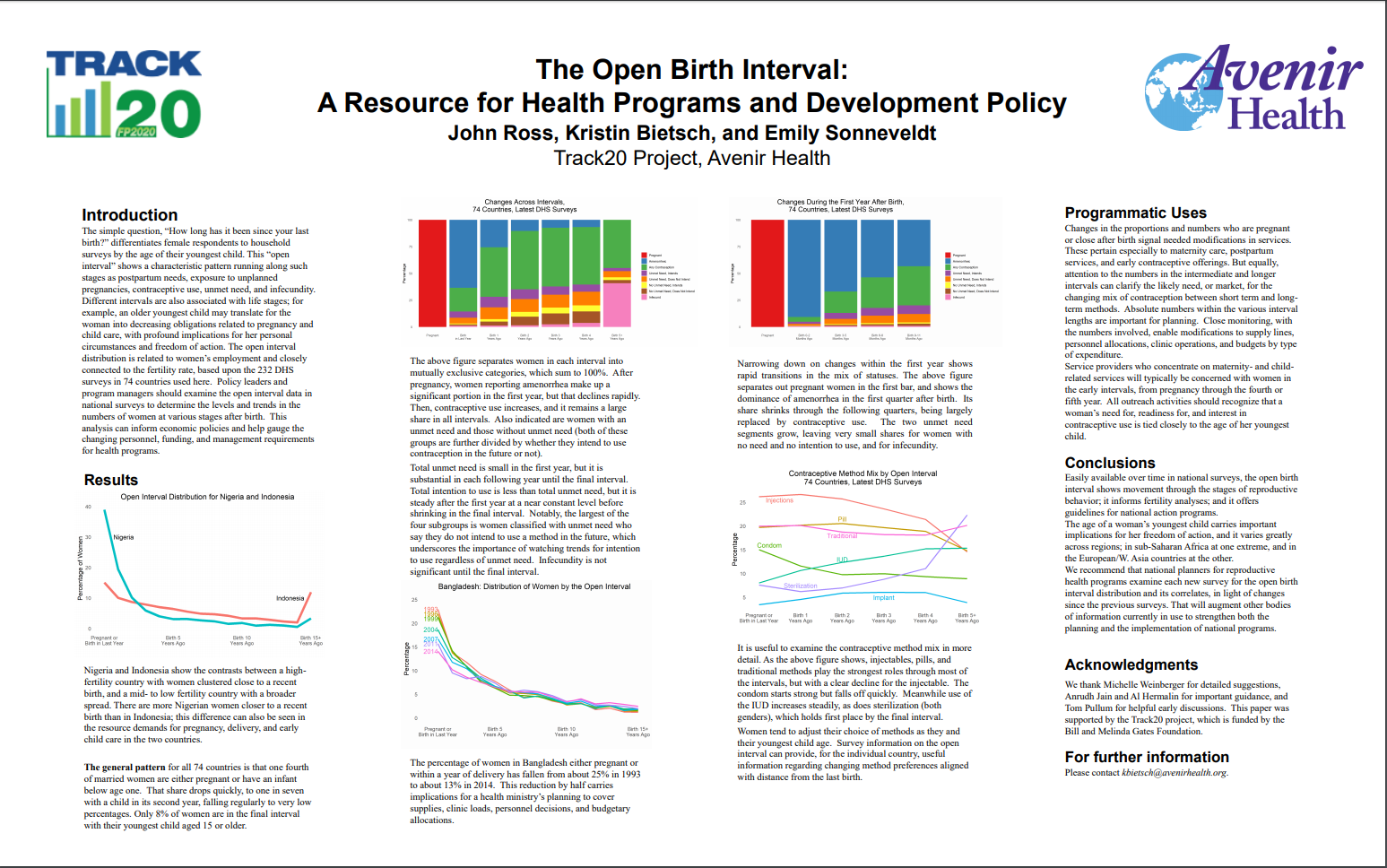Birth spacing leads to healthier babies and mothers. Contraception can help women space births. In sub-Saharan Africa, research by Track20 shows that almost all children do not have a new sibling until at least 2 years after their own birth, and for a majority at least 3 years. The length of space between births has increased over time. Read more about birth spacing trends here:
Healthy Birth Spacing Has Increased in Many sub-Saharan African CountriesTrack20 has also developed a new measure: The Open Birth Interval. The open interval can be determined from a simple question: “How long has it been since your last birth?” National surveys can provide a current snapshot, and changes through time can be detected by reference to earlier surveys. The measure is closely related to fertility and contraceptive use. A full paper about the Open Birth Interval was published in Global Health: Science and Practice and can be found here:
The Open Birth Interval: A Resource for Reproductive Health Programs and Women's EmpowermentA poster on this research was presented at the Population Association of America annual meeting in 2019.
The Open Birth Interval: A Resource for Health Programs and Development Policy